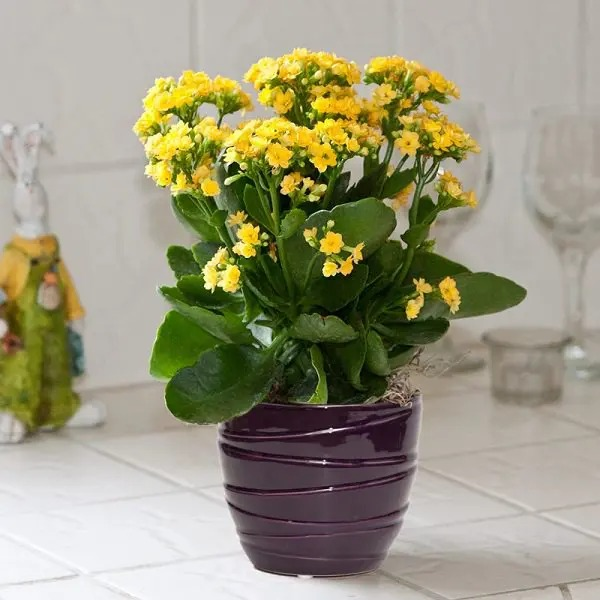Your home will look better and feel more natural with the aid of houseplants. In order to adorn their homes, many individuals wish to cultivate houseplants. There are certain houseplants, nevertheless, that are harmful to cats and dogs. Knowing about your pet is preferable if you have one. And for that reason, we’ve included a list of 30 plants that you should make sure your dog stays clear of. Look them up!
#1 Sago Palm

Sago palms are a beautiful plant, but they also contain a toxin called cycasin, which is known to harm the liver. Hemorrhagic gastroenteritis, vomiting, jaundice, increased thirst, bruising, clotting issues, liver damage, liver failure, and mortality are just a few of the symptoms.
#2 Alocasia

If the dog consumes this herb. Some symptoms include inflammation of the mucous membranes, severe mouth, lip, and tongue burning, frequent drooling, vomiting, and trouble swallowing.
#3 Aloe

Many variations of this kind of leaf succulent have a range of therapeutic applications. However, aloes are only poisonous to dogs when they consume them. Vomiting, depression, diarrhea, a loss of appetite, and a change in urine color are some examples of symptoms.
#4 Arrowhead Plant

The plant’s sap includes calcium oxalate, which is dangerous if touched or consumed. Symptoms such as nausea, diarrhea, sadness, a loss of appetite, chills, and a change in the color of the urine.
#5 Calla Lily

Although calla lilies are stunning, when they are eaten, clinical symptoms such dental discomfort, diarrhea, drooling, loss of appetite, and mouth-pawing become evident right away.
#6 Strelitzia (Bird of Paradise)

Hydrogen Cyanide (also known as prussic acid) is present in strelitzia, a plant that is cultivated indoors. Symptoms such moderate nausea, vomiting, tiredness, breathing difficulties, decreased appetite, and death.
#7 ZZ Plant

The Araceae family is the home of the ZZ plant. Symptoms including increased drooling, inflammation of the tongue, severe burning, and mucous membrane irritation.
#8 Dieffenbachia

Often known as a dumb cane. The act of biting or chewing on this plant may be harmful. Symptoms such inflammation of the mucous membranes, severe burning, and irritation of the mouth, lips, and tongue; also excessive drooling; vomiting; and trouble swallowing.
#9 Jade Plant

Jade plants have a low toxicity. Such as nausea and itching.
#10 Kaffir Lily

A lovely plant with succulent leaves and orange blossoms is the kaffir lily. It is one of the plants that are harmful to dogs and may induce renal failure in cats when consumed. Symptoms like diarrhea and vomiting. Large ingestion results in heart arrhythmia, tremors, low blood pressure, and convulsions.
#11 Dracaena Fragrans

The cornstalk plant is its common name. Pets are just somewhat poisonous to dracaena fragrans. Symptoms including drooling, sadness, nausea, and even vomiting with blood.
#12 Cyclamen

Beautiful annual houseplant cyclamen is cultivated for decorative reasons. Ingesting the roots of cyclamen, which contain saponins, might result in various clinical symptoms such salivation, vomiting, and diarrhea. Arrhythmia and seizures are also possible with high intake heart.
#13 Desert Rose (Adenium)

A stunning succulent that can be grown in pots and is often used as an ornamental plant. Vomiting, diarrhea, anorexia, melancholy, an irregular heartbeat, and death are just a few of the symptoms.
#14 Golden Pothos

The golden pothos, a superb climbing plant that can be cultivated without sunlight, contains insoluble calcium oxalates that, if eaten by your dog, might produce minor clinical signs. Such as excessive drooling, trouble swallowing, irritation of the mucous membranes, acute burning, and irritation of the mouth, lips, and tongue.
#15 Kalanchoe

A family of plants known as the Crassulaceae. The ubiquitous houseplant kalanchoe has lovely blossoms. A naturally occurring toxin that damages the heart is present in this plant. Symptoms as nausea, diarrhea, and an irregular heartbeat (rare).
#16 Dracaena

There are 40 species of woody and shrubby plants in the genus Dracaena. They are often cultivated as houseplants and may be found in subtropical and tropical parts of Asia, Africa, and the Canary Islands. Symptoms including drooling, sadness, nausea, and even vomiting with blood.
#17 Eucalyptus

If you have a dog and are growing eucalyptus as a houseplant, be aware that eucalyptus oil might make your dog lethargic and irritable. Salivation, vomiting, diarrhea, sadness, and weakness are some of symptoms.
#18 Flame Lily (Gloriosa Superba)

Numerous unintentional fatalities have been brought on by eating flame lilies. Additionally, it has been used to kill people, commit suicide, start abortions, and poison pets. Salivation, bloody vomiting, bloody diarrhea, shock, liver damage, bone marrow suppression, paralysis, and death are just a few of the symptoms.
#19 Ficus Benjamina

Known also as weeping fig. Skin inflammation may result through skin contact, while oral irritation might result from intake. Pets that come into contact with the rubber tree plant (ficus elastica) have similar symptoms.
#20 Flamingo Flower (Anthurium Scherzerianum)

Calcium oxalates, which are present in flamingo flowers, may irritate the mouth and cause other moderate clinical symptoms including excessive saliva and trouble swallowing. They can also cause extreme burning and irritation of the mouth, lips, and tongue.